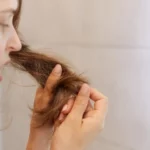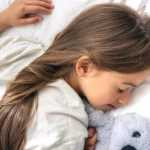Introduction: The Prevalence of Lice and the Need for a Comprehensive Guide
Lice infestation is an age-old nuisance that affects people across the globe. The relentless itching, discomfort, and stigma associated with lice make it imperative to have a comprehensive guide for their permanent removal. In this article, we embark on a journey to understand, identify, and effectively bid farewell to lice, empowering you with the knowledge to maintain a lice-free mane.
Understanding Lice: Types, Life Cycle, and Common Symptoms
Types of Lice
Head Lice
- Head lice are the most common type, residing on the scalp and feeding on blood.
Body Lice
- Body lice infest clothing and only move to the skin to feed.
Pubic Lice
Life Cycle of Lice

Nits (Eggs)
- Nits are oval-shaped eggs attached to hair shafts, often near the scalp.
Nymphs
- Nymphs hatch from nits and mature into adult lice
Adults
- Adult lice are about the size of a sesame seed and are the most mobile stage.
Common Symptoms
Itching
- Itching is an allergic reaction to lice bites and is the most noticeable symptom.
Red Bumps
- Scratching can lead to red bumps or sores on the scalp.
Understanding these aspects provides insight into the various stages at which lice can be targeted, ensuring a comprehensive approach to their removal.
Identifying Lice Infestation: Signs and Differentiation from Other Scalp Conditions
Accurate identification is key to effective removal. We delve into the signs to look out for, guiding you on how to differentiate lice from common culprits like dandruff or other scalp conditions.
Signs of Lice Infestation
Visible Nits
- Nits are tiny, oval eggs attached to hair near the scalp.
Itching, Especially at Night
- Lice are more active at night, leading to increased itching.
Red or Sores on the Scalp
Differentiating from Other Scalp Conditions

Distinguishing Lice from Dandruff
- Lice move, while dandruff flakes are stationary.
Recognizing Lice Compared to Other Infections
- Lice infestations require specific treatment compared to fungal or bacterial infections.
Accurate identification sets the stage for practical and targeted removal strategies.
Step-by-Step Guide to Removing Lice: Detailed Instructions on Combing and Wet Combing
A meticulous approach is crucial for permanent lice removal. We provide a step-by-step guide, detailing the use of combs, wet combing techniques, and other effective methods.
Combing Techniques
Using Fine-toothed Combs
- Fine-toothed combs are essential for removing adult lice and nits.
Wet Combing for Nits
- Wet hair makes it easier to comb through and remove nits effectively.
Frequency and Duration
- Regular and thorough combing is necessary for successful removal.
Additional Methods
Heat Treatment
- Applying heat can be effective in killing both lice and nits.
Natural Oils
- Oils like tea tree oil and coconut oil can suffocate and kill lice.
Shaving as a Drastic Option
- In severe cases, shaving may be considered for a fresh start.
These practical instructions ensure a thorough and comprehensive removal process, leaving no room for lice to persist.
Natural Remedies: Essential Oils, Vinegar, and Mayonnaise for Lice Removal
For those inclined towards natural solutions, we explore remedies such as essential oils, vinegar, and mayonnaise.
Essential Oils
Tea Tree Oil
- Tea tree oil has natural insecticidal properties that can help eliminate lice.
Lavender Oil
- Lavender oil has a pleasant scent while serving as an effective lice deterrent.
Neem Oil
- Neem oil has antibacterial and antifungal properties, aiding in lice removal.
Vinegar and Mayonnaise
How These Household Items Aid in Removal
- Vinegar helps dissolve the glue that attaches nits to hair strands.
- Mayonnaise smothers and suffocates lice, making it easier to comb them out.
Application and Duration
- Proper application and timing are crucial for the success of these remedies.
These alternatives not only target lice effectively but also offer a chemical-free approach to lice removal.
Over-the-Counter Products: Reviewing Popular Lice Treatment Products
The market is flooded with lice treatment products. We review popular over-the-counter options, providing insights into their effectiveness.
Top Products
Shampoos
- Lice-killing shampoos often contain active ingredients like permethrin or pyrethrin.
Lotions
- Lotions may offer a more viscous solution for thorough coverage.
Prescription Medications
- Stronger prescription medications may be necessary for severe infestations.
Effectiveness and Considerations
Reading Labels
- Understanding active ingredients and proper usage is crucial.
Adverse Effects
- Allergic reactions or skin irritation may occur in some cases.
This information aids in making informed decisions when selecting products for lice removal.
Professional Treatments: Seeking Help from Lice Removal Experts
In some cases, professional intervention becomes necessary. We discuss the option of seeking help from lice removal experts.
Benefits of Professional Treatment
Expertise and Experience
- Professional lice removers are trained to identify and eliminate lice effectively.
Ensuring Complete Eradication
- Professional treatments often include thorough follow-ups to ensure all lice are removed.
Considerations and Costs
When to Seek Professional Help
- Severe infestations or failed home treatments may warrant professional assistance.
What to Expect During Professional Treatment
- Understanding the process and potential outcomes helps set expectations.
Exploring professional options provides a well-rounded view of potential solutions.

Preventive Measures: Tips to Maintain Lice-Free Hair
Prevention is as crucial as removal. We offer practical tips on preventing future lice infestations, establishing habits that contribute to maintaining lice-free hair.
Personal Hygiene Habits
Regular Hair Washing
- Clean hair is less attractive to lice.
Avoiding Shared Items
- Limiting the sharing of combs, hats, and other personal items.
Timely Detection and Action
- Regular checks and prompt action upon detection are key.
Home and Environment
Cleaning Bedding and Personal Items
- Regular washing and cleaning can prevent lice spread.
Regular Household Cleaning
- Maintaining a clean living environment discourages lice infestations.
These preventive measures create a holistic approach to lice prevention.
Dealing with Lice in Different Settings: Schools, Households, and Community Settings
Lice infestations can spread in various settings. We address strategies for dealing with lice in schools, households, and community settings, creating a holistic approach to lice prevention.
Schools
Lice Policies and Education
- Implementing educational programs and policies to minimize lice transmission.
Quick Response Measures
- Swift action in the event of a lice outbreak helps prevent further spread.
Households
Family-wide Treatment
- Treating all family members simultaneously is crucial for success.
Environmental Cleaning
- Thoroughly cleaning and vacuuming living spaces reduces the risk of reinfestation.
Community Settings
Public Awareness Campaigns
- Raising awareness about lice prevention in community spaces.
Collaboration for Prevention
- Community cooperation enhances the effectiveness of prevention measures.
Understanding how lice can spread and thrive in different environments informs targeted prevention strategies.
Myths and Misconceptions: Debunking Common Lice Myths
In the quest for lice removal, it’s essential to dispel myths and misconceptions.
Common Myths
Lice Only Infest Unkempt Hair
- Lice are equal opportunists, infesting clean and dirty hair alike.
Lice Jump from Head to Head
- Lice do not have the ability to jump; they crawl from hair to hair.
Debunking Misconceptions
How Lice Spread
- Understanding the actual modes of transmission helps in prevention.
The Importance of Timely Action
- Swift action is crucial to prevent the further spread of lice.
Accurate information is crucial for effective lice removal.
Conclusion: Empowering Readers with Knowledge and Resources
In conclusion, armed with the knowledge gained from this comprehensive guide, you are empowered to bid farewell to lice permanently. Take charge of your hair health, implement effective strategies, and enjoy a lice-free future. Remember, knowledge is the key to eradicating this common problem and ensuring the well-being of your hair and scalp.
(FAQs) on Permanently Removing Lice from Hair
Yes, with consistent and thorough efforts, lice can be permanently removed from hair. A combination of over-the-counter treatments, natural remedies, and preventive measures is often effective.
Natural remedies, such as neem oil, tea tree oil, and olive oil, can be effective in smothering and eliminating lice. However, the results may vary, and some individuals may prefer the convenience of over-the-counter medicated shampoos.
The timeline varies based on the chosen treatment method, the severity of the infestation, and individual factors. Consistency in application and following recommended guidelines can speed up the process.
There’s a possibility of reinfestation if preventive measures are not taken. Regular head checks, avoiding shared personal items, and maintaining good hygiene can significantly reduce the risk of lice returning.
In severe cases or if home remedies prove ineffective, professional lice removal services can be considered. They provide expertise in thorough combing and specialized treatments.
While it’s challenging to guarantee complete prevention, practicing good hygiene, avoiding shared items, and using preventive products can reduce the risk of lice infestations.
Lice themselves don’t pose significant health risks, but their bites can cause itching and discomfort. However, the social stigma associated with lice infestations may impact emotional well-being.
Head lice are adapted to live on the scalp and do not survive long away from the human host. However, washing and drying bedding and personal items on high heat can eliminate any potential lice or nits.
uman lice are species-specific and do not infest pets. Pets cannot transmit lice to humans, and vice versa.
Regular head checks, especially in households with school-going children, should be performed weekly or bi-weekly. Early detection allows for prompt intervention and prevents the spread of lice.



GIPHY App Key not set. Please check settings
One Comment